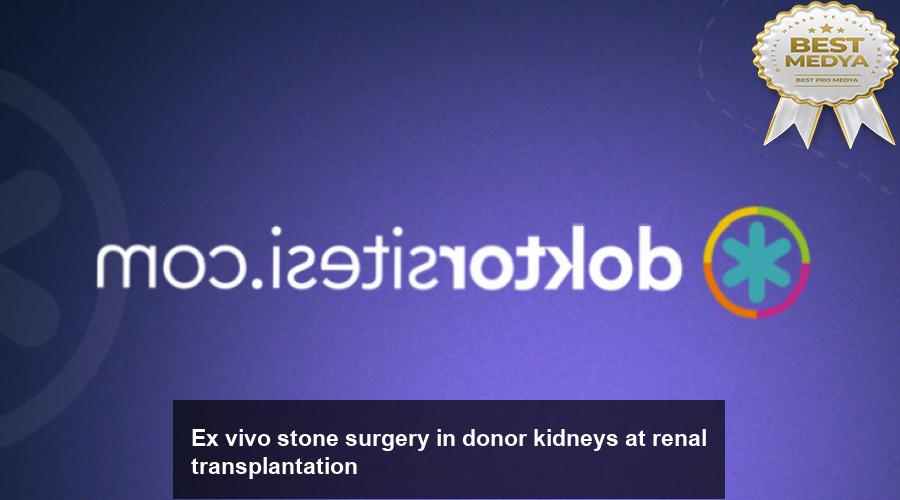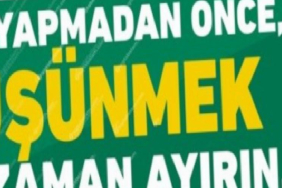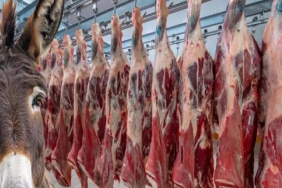Ex vivo stone surgery in donor kidneys at renal transplantation
Mehmet Sarier,1 Ibrahim Duman,1 Yucel Yuksel,2 Sabri Tekin,2 Mustafa Ozer,2 Levent Yucetin,2
Asuman Havva Yavuz,3 Alper Demirbas2 and Erdal Kukul1
Departments of 1
Urology, 2
Transplantation Unit, and 3
Nephrology, Medical Park Hospital, Antalya, Turkey
Abbreviations & Acronyms
ESWL = extracorporeal
shock wave lithotripsy
RIRS = retrograde intrarenal
surgery
RT = renal transplantation
URS = ureteroscopy
Correspondence: Mehmet
Sarier M.D., Department of
Urology, Medical Park Hospital,
Fener Mahallesi, Tekelioglu Cd.
No. 7, Antalya 07160, Turkey.
Email: drsarier@gmail.com
Received 24 January 2018;
accepted 19 June 2018.
Objective: To report our experience on the outcomes of ex vivo ureteroscopy and
ex vivo pyelolithotomy carried out on the donor kidney before living donor renal
transplantation.
Methods: Between 2009 and 2016, 13 stone-bearing donor kidneys underwent ex vivo
bench surgery after donor nephrectomy. Of these, six patients underwent ex vivo
ureteroscopy and seven patients underwent ex vivo pyelolithotomy. Veri were analyzed
for technical feasibility, intraoperative and postoperative complications, stone clearance,
and stone recurrence.
Results: The mean stone burden was 9.1 mm (range 5–15 mm). Renal collecting
system access and stone extraction were successfully achieved, and a stone-free
status was accomplished with both techniques. The mean duration of ex vivo
ureteroscopy was 12.5 min (range 9–20 min), and the mean duration of ex vivo
pyelolithotomy was 3.1 min (range 1–8 min). One patient in the pyelolithotomy group
developed urinary leakage and underwent surgical repair on the third postoperative
day. The mean long-term follow-up duration was 49.6 months (range 14–
101 months). None of the 13 patients included in the study suffered from stone
recurrence.
Conclusions: Our experience suggests that both ex vivo ureteroscopy and ex vivo
pyelolithotomy procedures can safely and effectively be carried out in stone-bearing
living donor kidneys, without compromising renal allograft function.
Key words: ex vivo surgery, pyelolithotomy, renal transplantation, ureteroscopy,
urolithiasis.
Introduction
RT is the best option for treating patients with end-stage renal disease, providing better
physical, socioeconomic and psychological outcomes.1 For a successful RT, it is important
to select the appropriate donor. Although many guidelines have attempted to define the cri-
teria for donor selection, there is still no consensus, and the management of donor kidney
lithiasis is a controversial issue. Lithiasis in the donor kidney has been considered a relative
contraindication to donation. As clearly stated in the Amsterdam forum in 2005, an asymp-
tomatic potential donor with a current single stone might be considered suitable for kidney
donation if: (i) there is no hypercalciuria, hyperuricemia or metabolic acidosis; (ii) there is
no cystinuria or hyperoxaluria; and (iii) the current stone is <15 mm in size or potentially
removable during transplant.2 In such donors, the management of stones is a critical issue,
because lithiasis in the transplanted kidney can cause obstruction, sepsis and loss of allo-
graft function. However, the optimal treatment for such patients has not yet been deter-
mined. Some authors recommend watchful waiting for stones <4 mm.3,4 According to the
limited literature on the management of stones with a diameter of 4–15 mm, some authors
choose to carry out ESWL/RIRS before transplantation,5,6 whereas some authors prefer to
carry out ex vivo stone surgery immediately after donor nephrectomy, which is known as
ex vivo bench surgery.7–9 We report our surgical experience and follow-up results in a ser-
ies of renal transplant patients in whom the donor kidney underwent ex vivo bench surgery
before transplantation.
© 2018 The Japanese Urological Association 1
International Journal of Urology (2018) doi: 10.1111/iju.13755
Methods
After institutional review board approval was obtained
(approval number: 004/2017), a retrospective study was
undertaken to identify patients who had received living donor
kidneys that underwent ex vivo stone removal on the back
table before transplantation. All donors had undergone stan-
dard donor evaluation. The 24-h urinalyses of all donors were
noted to be free of metabolic risk factors for urolithiasis, such
as hypercalciuria, hypocitraturia, hyperuricosuria and hyper-
oxaluria. The screening results for other metabolic risk factors
including gout, hyperparathyroidism and hypophosphatemia
were also negative. All donors and recipients were informed
in detail about the potential risks of developing nephrolithia-
sis in a solitary kidney after the transplantation period.
Ex vivo bench surgery was carried out in donor kidneys with
4–15-mm stones confirmed by computed tomography angiog-
raphy. Patients with asymptomatic stones <4 mm were not
treated with ex vivo bench surgery. Instead, a JJ stent was
inserted and the kidney was transplanted with the calculus
in situ. For this reason, patients with stones <4 mm were
excluded from the study. The demographic veri (including
age and sex), location of stone, stone size, surgical technique
used, duration of operation, intraoperative and postoperative
complications, stone-free status, stone recurrence in recipi-
ents, and renal allograft functions in follow-up were recorded.
Either ex vivo URS or ex vivo pyelolithotomy was carried out
after donor nephrectomy before transplantation. Informed
consent was obtained from all individual participants included
in the study. The study protocol was approved by the local
ethics committees.
Ex vivo URS
Immediately after donor nephrectomy, the kidney was
immersed in ice slush on the bench and retrograde URS was
carried out under low-pressure (the irrigation bag was placed
<50 cm above the kidney level) manual irrigation with nor-
mal saline, without using a wire. First, the ureter was spatu-
lated and the distal part was stabilized with stay sutures.
Then, the ureteroscope was passed through the ureter into the
renal pelvis. The devices used were 6/7.5 semi-rigid uretero-
scope (Richard Wolf GmbH, Knittlingen, Germany), 7.5-Fr
flexible ureteroscope (Karl Storz GmbH, Tuttlingen, Ger-
many) and 8/9.8-Fr 12° pediatric cystoscope (Richard Wolf
GmbH). While inspecting the pelvicalyceal system, the kid-
ney was manipulated with the free hand to obtain better visu-
alization of the stone. In the case of a lower calyx with acute
angulation that was inaccessible with a semi-rigid uretero-
scope or a pediatric cystoscope, a flexible ureteroscope was
used. The stone(s) identified were fragmented using holmium
laser lithotripsy and removed with a nitinol basket or grasp-
ing forceps.
Ex vivo pyelolithotomy
In selected cases, such as in stones that are relatively large
and clearly visible under fluoroscopy, pyelolithotomy pro-
vides a safe conduit for manipulating the surgical instruments
safely without causing ureteral trauma. After placing stay
sutures on the renal pelvis, pyelotomy was carried out. Under
fluoroscopic guidance, Randall kidney stone forceps were
used to grasp and remove the stone. In the case where the
stone was not accessible by this technique, a pediatric cysto-
scope was used to extract the stone under direct visualization
using a basket or grasping forceps. Then, the pyelotomy inci-
sion was closed using 5/0 vicryl running sutures.
Once stone clearance was confirmed, a JJ ureteral stent
was placed in all patients. The urethral catheter was removed
between the 5th and 7th postoperative days, and the JJ stent
was removed on postoperative week 3 or 4. All recipients
were followed up every 3 months by ultrasonographic evalu-
ation. The en az follow-up duration was 12 months.
Results
Between 2009 and 2016, 3748 living donor RTs were carried
out at Medical Park Hospital, Antalya, Turkey. Of these, 13
(0.34%) donor kidneys underwent ex vivo bench surgery for
the removal of asymptomatic stones. The female-to-male ratio
was 1:1. The mean stone burden was 9.1 mm (range
5–15 mm). Six patients underwent ex vivo URS and seven
patients underwent pyelolithotomy (Table 1).
After initial access was obtained with a semi-rigid adult
ureteroscope, a pediatric cystoscope was used in order to
facilitate handling. The shorter shaft of the pediatric cysto-
scope enabled faster and easier access to the pelvicalyceal
system by facilitating the maneuvering of the device (Fig. 1).
The mean duration of ex vivo URS procedures was 12.5 min
(range 9–20 min). In one patient, the semi-rigid scope was
unable to reach the stone because of the angulation of the
lower calix, so a flexible ureteroscope was used to visualize
the stone in the lower calix. The stone was dislodged into the
renal pelvis with the help of a nitinol basket. It was then
fragmented in the renal pelvis using holmium laser, and frag-
mented pieces were extracted with a basket. If the ureter was
not wide enough to permit easy passage of the endoscope,
pyelolithotomy was preferred in order to prevent the ureteral
trauma that might be caused during the URS procedure.
Relatively large stones that were visible under fluoroscopy
were removed by pyelolithotomy. The mean duration of
pyelolithotomy was 3.1 min (range 1–8 min). In one patient,
the stone could not be accessed, even though it was visible
Table 1 Outcomes in ex vivo stone surgery
No.
Ex vivo pyelolithotomy Ex vivo URS
Age/sex Location
Stone
size Age/sex Location
Stone
size
1 40/Female Mid pole 6 46/Male Lower pole 8
2 41/Female Lower pole 8 60/Male Renal pelvis 6
3 72/Female Upper pole 11 53/Male Mid pole 5
4 49/Male Mid pole 13 49/Female Mid pole 7
5 44/Female Lower pole 15 56/Male Lower pole 8
6 60/Male Mid pole 14 48/Female Upper pole 8
7 62/Female Upper pole 10
2 © 2018 The Japanese Urological Association
M SARIER ET AL.
under fluoroscopy. Thus, a pediatric 8/9.8-Fr cystoscope was
inserted through the pyelotomy incision. The stone was visu-
alized in the submucosa, extracted with holmium laser and
removed with a basket.
None of the patients experienced any intraoperative com-
plications. As an early postoperative complication, on postop-
erative day 3, one patient developed severe urinary leakage
from the pyelotomy site despite the urethral catheter and the
ureteral JJ stent. The leakage was repaired with primary
sutures under general anesthesia (Clavien grade IIIb).
One month after transplantation, all patients had their
stents removed, and the mean serum creatinine at 1-month
follow up had decreased to 1.3 0.5 mg/dL. The mean
long-term follow-up duration was 49.6 months (range 14–
101 months). None of the 13 patients who underwent ex vivo
stone surgery developed stone recurrence during follow up.
No ureteral obstruction was observed in the six patients who
underwent ex vivo URS.
Discussion
Traditionally, nephrolithiasis is considered to be a relative con-
traindication to kidney transplantation (both deceased and living
donor), due to the risk of future stone formation that might lead
to urinary obstruction, recurrent infections and graft loss. With
the development of new endourological surgical techniques that
have enabled higher success and lower morbidity, minimally
invasive stone surgery seems to be an effective approach to
overcome these risks. In light of these developments, successful
results of minimally invasive surgery used throughout different
steps of the transplantation period are reported in the literature.
However, no standards have been established yet for the treat-
ment of nephrolithiasis in kidney donors.10
Currently, if the stone in the donor kidney is <15 mm in
size or potentially removable during transplant, ex vivo bench
surgery is the recommended treatment option.2 However,
there is no consensus in the literature regarding whether a
given stone should be managed conservatively or undergo
bench surgery. In the olağan population, the spontaneous
passage of small ureteral stones <4 mm in size is reported to
be between 76% and 98%.11,12 However, all of these data
relate to patients with a native stone-bearing kidney and a
olağan contralateral kidney. Very few studies have examined
the outcome of stones in transplanted kidneys. In small series
with a mean follow-up period of <2 years, stone-free rates
range between 60% and 100% for stones <4 mm.3,4 In our
institution, stones <4 mm enter a follow-up protocol.
Ex vivo bench surgery for stone-bearing donor kidneys has
helped reduce the morbidity rates, costs and transplant waiting
times. Currently, most stone surgeries in urology practice are
carried out using minimally invasive methods. Likewise, the
literature shows that ex vivo bench surgery is also generally
carried out using minimally invasive methods. However, there
is great diversity in the methods preferred. This diversity
mostly stems from the wide variety of surgical devices used.
Minimally invasive bench surgery can be categorized into
two main approaches: ex vivo URS and ex vivo pyelolitho-
tomy. The first successful ex vivo URS was reported by
Rashid et al., who used a semi-rigid 6.9-Fr ureteroscope in a
10-patient series.8 Shade et al. reported successful results
with a 9.5-Fr flexible ureteroscope in stones inaccessible with
a 6.9-Fr ureteroscope.7 Pushkar et al. have accessed the stone
with ex vivo URS and removed the stone with pyelotomy
after manipulating it into the renal pelvis with a basket.13 In
contrast, Ganpule et al. used a 6-Fr pediatric cystoscope for
ex vivo URS and achieved successful results.6 In the present
series, we used a 6/7.5-Fr semi-rigid ureteroscope for the first
patient. We achieved excellent results with pediatric cysto-
scope, because it provided better stability and maneuverabil-
ity due to its shorter shaft length.
As in ex vivo URS, pyelolithotomy is also being carried
out using different techniques. Klinger et al. reported suc-
cessful stone extraction with a 14.5-Fr flexible cystoscope
from the pyelotomy incision in a series of patients.10 Simi-
larly, Ganpule et al. reported successful stone removal with a
12-Fr nephroscope from the pyelotomy incision.6 In the pre-
sent series, pyelolithotomy was successfully carried out under
fluoroscopic guidance using only Randall kidney stone for-
ceps, except for one patient.
As can be seen, stone-free success rates are similar, even
though the instruments used are different. The stone-free rates
reported in the literature range between 89.5% and 100%.6–9
In this case, it would be best to determine the method with
the lowest morbidity instead of the method with the highest
success rate. In the literature, low morbidity rates are reported
both with ex vivo URS and ex vivo pyelolithotomy. Ex vivo
URS poses a risk of ureteral stricture because of the potential
damage that might be caused on the ischemic ureter while
passing the ureteroscope.
Although most studies in the literature describe ex vivo
URS as a procedure with low morbidity, Mosimann et al.
reported a case of graft loss after ex vivo URS due to acute
ischemia caused by a major intimal flap in the hilum. This
complication was thought to occur as a result of the instru-
mental manipulations within the renal pelvis, leading to an
injury in the adjacent artery. Thus, they suggested consider-
ing pyelotomy as an alternative to ex vivo URS, depending
on the clinical conditions.14
In contrast, pyelotomy poses a risk of postoperative urinary
leakage from the pyelotomy incision despite the JJ stent, and
Fig. 1 Ex vivo URS; the pediatric cystoscope provides better maneuvering
and handling because of its short shaft length.
© 2018 The Japanese Urological Association 3
Ex vivo stone surgery in donor kidneys
this might require surgical repair, as was the case in one of
our patients. We believe that the slow wound healing process
in renal transplant recipients and the postoperative high urine
output altogether hinder the spontaneous closure of the pyelo-
tomy incision despite the JJ stent. Keeping the incision line
to a en az and closing it carefully might minimize the
probability of such complications. In addition, in patients
undergoing pyelotomy, taking measures such as prolonged
bladder catheterization, JJ stenting, and early steroid reduc-
tion should be considered in order to avoid leakage. Another
concern in such endourological procedures is the potential of
renal parenchymal injury caused by pyelovenous, pyelotubu-
lar and pyelolymphatic reflux of the irrigation fluid during
the procedure.8 Although only a theory, this is a risk that
cannot be overlooked. Thus, it would be best to use the low-
est pressure possible during irrigation.
The duration of the operation is another matter of debate.
Studies have shown that in living donor RT, a cold ischemia
time up to 8 h is acceptable, as it does not jeopardize renal
functions, increase acute rejection rates or affect long-term allo-
graft survival.15 Similarly, none of the reports on ex vivo bench
surgery describe any renal damage related to the duration of
the operation. Despite this, we believe that trying to keep the
ischemia period as short as possible will be a wise choice. The
reported durations of operation in previous studies are as fol-
lows: a mean of 28 min in the 14-patient series by Pushkar
et al.,
13 10–45 min in the 17-patient ex vivo URS series by
Olsburgh et al.,
9 a mean of 6.5 min in a 10-patient series of
ex vivo URS by Rashid et al.8 and a mean of 6.2 min in a pye-
loscopy series by Schade et al.7 The mean pyelolithotomy
duration of 3.1 min in the present study is noteworthy.
Especially for those who specialize in endourology, bench
surgery is an easy-to-learn procedure, as it is easier to handle
and maneuver the kidney on the back table. Thus, we believe
that carrying out one procedure is sufficient for a surgeon to
develop a satisfactory technique/develop adequate expertise.
Hypercalcemia, hyperparathyroidism, and hypocitraturia
are metabolic factors that are known to cause stone forma-
tion,16 and stones of metabolic origin are known to have a
higher recurrence rate.17 According to previously published
series on ex vivo bench surgery, no stone recurrence was
observed during the follow-up period. It has been hypothe-
sized that the higher glomerular filtration rate and urine out-
put that the transplanted kidney is subjected to lowers the
tendency of stone recurrence.8 We would like to emphasize
how important it is to carry out metabolic assessment during
donor evaluation in order to prevent the recurrence of stones
after ex vivo stone surgery. The fact that none of the patients
in our series suffered from stone recurrence during a mean
follow-up period of 24 months supports this opinion.
Our series provides further evidence on the safety and effi-
cacy of ex vivo URS and pyelolithotomy during living donor
RT. Because of its lower morbidity and easy applicability,
ex vivo URS might be preferred as the first choice. It will be
wise to use a pediatric cystoscope during ex vivo URS, as this
will provide better maneuvering and handling. In relatively lar-
ger stones that are visible under fluoroscopy and in case the
cold ischemia time is limited, pyelolithotomy can be safely car-
ried out. Both ex vivo URS and ex vivo pyelolithotomy seem
to be stone-free in the follow up, with a low risk of recurrence.
Conflict of interest
None declared.
References
1 Suthanthiran M, Strom TB. Renal transplantation. N. Engl. J. Med. 1994;
331: 365–76.
2 Delmonico F, Council of the Transplantation Society. A report of the Amster-
dam Forum on the deva of the live kidney donor: veri and medical guideli-
nes. Transplantation 2005; 79(6 Suppl): S53–66.
3 Devasia A, Chacko N, Gnanaraj L et al. Stone-bearing live-donor kidneys
for transplantation. BJU Int. 2005; 95: 394–7.
4 Martin G, Sundaram CP, Sharfuddin A et al. Asymptomatic urolithiasis in
living donor transplant kidneys: initial results. Urology 2007; 70: 2–5.
5 Beckly J, Bhandari S, Eris J et al. The man who gained a stone. Nephrol.
Dial. Transplant. 2003; 18: 434–5.
6 Ganpule A, Vyas JB, Sheladia C et al. Management of urolithiasis in live-
related kidney donors. J. Endourol. 2013; 27: 245–50.
7 Schade GR, Wolf JS, Faerber GJ. Ex-vivo ureteroscopy at the time of live
donor nephrectomy. J. Endourol. 2011; 25: 1405–9.
8 Rashid MG, Konnak JW, Wolf JS et al. Ex vivo ureteroscopic treatment of
calculi in donor kidneys at renal transplantation. J. Urol. 2004; 171: 58–60.
9 Olsburgh J, Thomas K, Wong K et al. Incidental renal stones in potential live
kidney donors: prevalence, assessment and donation, including role of
ex vivo ureteroscopy. BJU Int. 2013; 111: 784–92.
10 Klingler HC, Kramer G, Lodde M et al. Urolithiasis in allograft kidneys.
Urology 2002; 59: 344–8.
11 Coll DM, Varanelli MJ, Smith RC. Relationship of spontaneous passage of
ureteral calculi to stone size and location as revealed by unenhanced helical
CT. Am. J. Roentgenol. 2002; 178: 101–3.
12 Segura JW, Preminger GM, Assimos DG et al. Ureteral Stones Clinical
Guidelines Panel summary report on the management of ureteral calculi. The
American Urological Association. J. Urol. 1997; 158: 1915–21.
13 Pushkar P, Agarwal A, Kumar S et al. Endourological management of live
donors with urolithiasis at the time of donor nephrectomy: a single center
experience. Int. Urol. Nephrol. 2015; 47: 1123–7.
14 Mosimann F, Masse M, Brunet M. Ex-vivo ureteroscopy at the time of live
donor nephrectomy: a word of caution. J. Endourol. 2012; 26: 754.
15 Vasdev N, Moir J, Dosani MT et al. Endourological management of urolithi-
asis in donor kidneys prior to renal transplant. ISRN Urol. 2015; 2011: 1–5.
16 Sakhaee K, Maalouf NM, Sinnott B. Clinical review. Kidney stones 2012:
pathogenesis, diagnosis, and management. J. Clin. Endocrinol. Metab. 2012;
97: 1847–60.
17 Zisman AL. Effectiveness of treatment modalities on kidney stone recurrence.
Clin. J. Am. Soc. Nephrol. 2017; 12: 1699–708.














